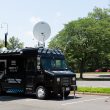Telecom bill could undermine government networks
A telecom deregulation bill introduced this week by Sen. John Ensign (R-Nev.) would prohibit local governments from unilaterally trying to offset costs associated with wireless broadband networks by selling excess capacity to consumers.
Private-sector service providers increasingly have expressed their opposition to government-backed efforts to enter the consumer broadband market, claiming that tax-funded entities have several unfair advantages, including being exempt from taxes.
Ensign’s bill would require governments to solicit bids from private-sector providers—and providing them with the same benefits the government would enjoy—before embarking on a network buildout. If no private bids are made, the government entity would be allowed to build its own network. Existing government-backed networks would be grandfathered, but any expansions to those networks would be subject to the bill’s provisions.
Jim Baller, an attorney who has led the government broadband movement, yesterday issued a statement calling the provisions in the bill “unnecessary, unworkable and counterproductive” to reaching President George Bush’s stated goal of making broadband access ubiquitous in the U.S. in 2007.
“The municipal networks provision of the Ensign bill would also create a host of disincentives and unintended consequences,” Baller’s statement read. “For many communities, it would retard economic development, educational opportunity, homeland security, public safety, cultural enrichment, and the many other benefits that access to affordable advanced telecommunications capability and services would foster.”
Indeed, many communities have deployed wireless broadband data networks for primarily for internal uses—typically for public safety—but would like to garner additional revenues by selling excess capacity on the networks to consumers, particularly in areas where the private sector does not offer broadband. Earlier this year, Motorola announced a flexible solution that would create two 2.4 GHz networks and two 4.9 GHz public-safety networks in a single installation with the idea that government entities could offer one of the 2.4 GHz networks to consumers.

















